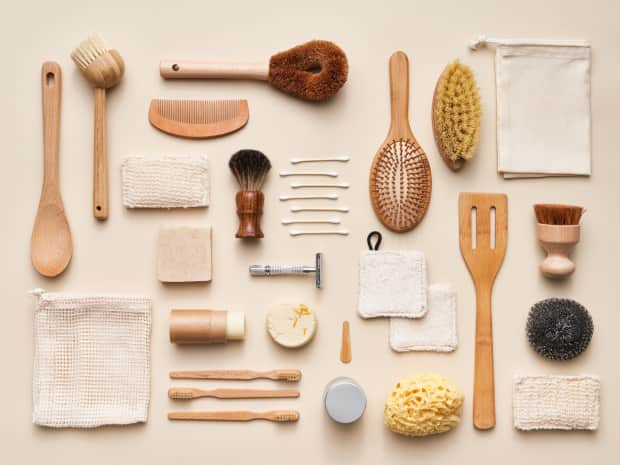
The 11 Best Bamboo Products for the Environment.
We've pulled 11 bamboo products that are not only great for the environment but are also highly rated by our members.
Read More

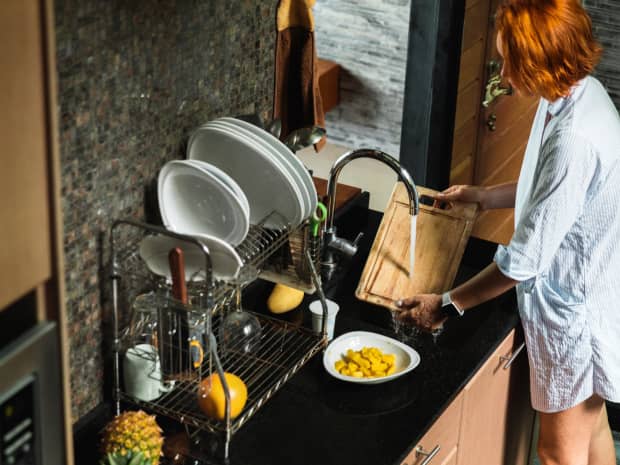
Last Updated: February 11, 2022
Regardless of the cutting board you use, it needs to be adequately cleaned after every use to avoid leaving behind food particles or bacteria resulting in foodborne illness!
Getting your hands dirty in the kitchen is a fun activity for the whole family, but keeping up with cleaning and sanitizing is critical to keep everyone safe. Bacteria can easily travel across surfaces, so it’s essential to be mindful about cleaning your kitchen and tools often.
Most of us have a cutting board, whether plastic, wood, or bamboo. Regardless of the cutting board you use, it needs to be adequately cleaned after every use to avoid leaving behind food particles or bacteria resulting in foodborne illness! Read on to learn some tips and tricks about the best natural cleaners for each type of cutting board surface.
Dr. Shaffner, microbiologist and professor, reviewed the research and concluded bacteria on a cutting board can double after 10 minutes of use, whether cutting raw meat or vegetables. Safefood found bacteria can last on kitchen surfaces for 1 hour, and E.coli can last for up to 24 hours!
Assuming plastic cutting boards are more sanitary than wood is a misnomer. In general, there is a risk for bacteria, no matter the cutting board material. The difference is how well your cutting board holds up to wear and tear and if there are crevices for bacteria and particles to lodge themselves into.
Once your cutting board has scratches and grooves, bacteria have an easier time wiggling in. Therefore, plastic or wood is more likely to welcome bacteria, whereas dense materials like bamboo are less prone to scratches—and therefore maybe bacteria.
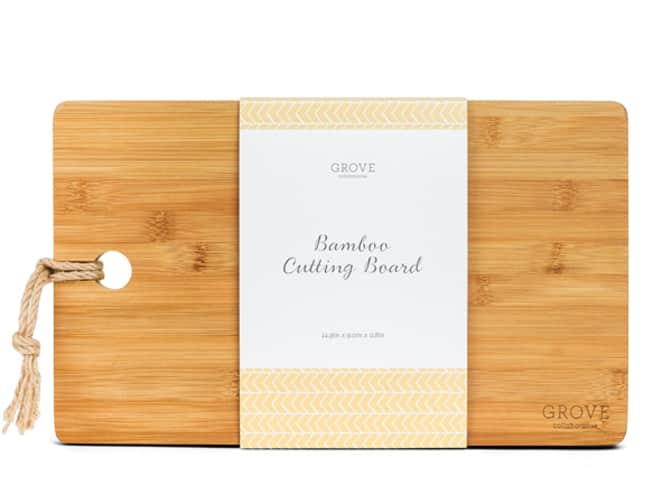
It’s a good idea to get into the habit of cleaning your cutting board with a natural cleaner after every use.
If you are preparing meat on your cutting board, it’s even more important to clean and sanitize after every use.
To properly clean your cutting board, you’ll want to find cleaners and tools specific to your cutting board material.
You will need to collect the following supplies to clean your cutting board.
Plastic cutting boards are usually dishwasher safe and can be cleaned and sanitized this way. To effectively clean your plastic cutting board in the dishwasher, use Grove Co. Total Clean Dishwasher Detergent Packs or other natural, yet effective, dishwasher detergents.
To wash your plastic cutting board by hand, use the following tools and natural products:
Wooden cutting boards are cleaned a bit differently from plastic. First, you should not put your wood cutting board in the dishwasher. Wash by hand only.
To clean your wood cutting board after use, you need the following materials and supplies.
To deep clean your wooden cutting board, you will also need lemon and salt.
Bamboo cutting boards are sustainable and low-maintenance options. Bamboo is a dense wood and holds up better to knives; it doesn’t get the nicks and grooves other cutting boards do.
Cleaning your bamboo cutting board is similar to cleaning wood and plastic one but requires a soft cloth instead of a scrubber or sponge.
To clean a bamboo cutting board, you need:
Vinegar is an eco-friendly, natural option to clean your kitchen and is a great addition when cleaning your cutting board. Vinegar can clean cutting boards of all types.
Most plastic or silicone cutting boards can safely go into the dishwasher. If you choose to clean and sanitize your cutting board this way, use a natural dishwasher detergent. Easy peasy.
To hand wash and sanitize, you will need a scrubber and a mixture of hot water and natural dish soap.
To effectively disinfect and sanitize your plastic or silicone cutting board, you can use a white vinegar solution. Completely coat your plastic cutting board with vinegar and let it sit for at least five minutes. Wash and dry again.
To clean and sanitize a wooden cutting board, you will need a silicone scraper, a mixture of hot water and natural dish soap, and a scrubber. Remember, wooden cutting boards cannot go into the dishwasher.
We recommend a deep clean every few weeks. For deep cleaning …
Now follow the cleaning steps above and finish it off with a sanitizing vinegar step to make sure your wooden cutting board is bacteria-free. Cover your wooden cutting board with distilled white vinegar and let it sit for a couple minutes to naturally and easily sanitize.
Cleaning and sanitizing your bamboo cutting board is simple. We recommend cleaning your bamboo board immediately to avoid staining. Do not put your bamboo cutting board in the dishwasher or let it sit in water to soak. This could cause warping or damage to any protective coating.
Like wood cutting boards, you will clean your bamboo prep board with hot water and natural dish soap. Be careful with your bamboo board, as it is not as hard as a wooden board, and shouldn’t be scraped or scrubbed hard.
Bamboo has antiseptic properties, but you should still disinfect it. Opt for a water and white vinegar mixture (one to one ratio).
Rub your bamboo board with the mixture, and spread baking soda over it. Use a soft sponge to rub the baking soda into your bamboo board, focusing on any stains. Allow it to sit for a few minutes, and then rinse with warm water and wipe with a dry cloth.
Don’t forget to maintain your bamboo cutting board by applying Pure Sense Wood & Bamboo Conditioner and Protectant or any other food-grade mineral oil or beeswax periodically.
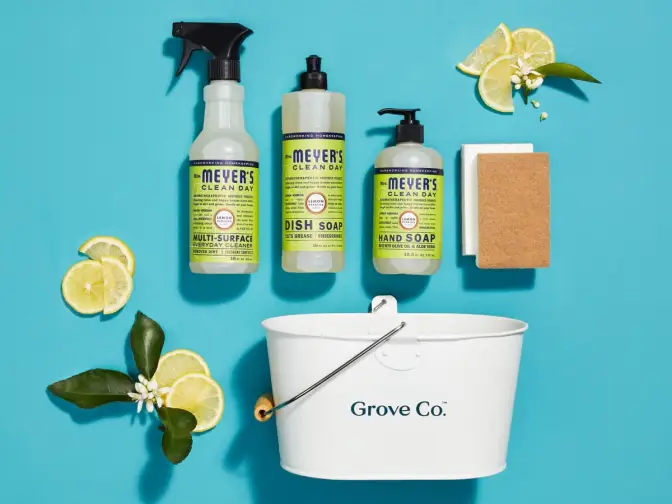
Wondering who Grove is, what types of products we offer, and how to get a free gift set when you sign up? Learn more about flexible monthly shipments, customizing your shipment, and joining millions of happy households — no monthly fees or commitments required.

We've pulled 11 bamboo products that are not only great for the environment but are also highly rated by our members.

We've pulled the 7 best Seeding by Grove bamboo products that have been top-rated by Grove members.

Let’s dig into what the best natural cleaners are for butcher block countertops and how you should actually clean these unique counters correctly.
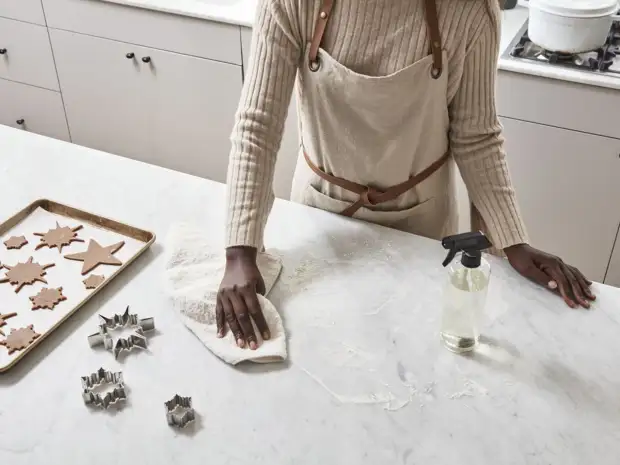
We've pulled the 14 best quartz countertop cleaners for your home that have been top-rated by Grove members.